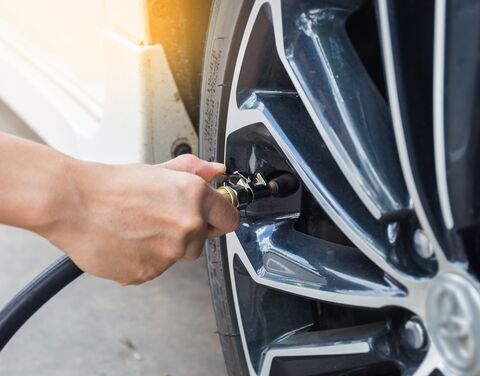
Changing your tires: Tips for a safer journey
Did you know that changing over your winter and summer tires at the right time not only makes your journey safer but can also save you money? Our blog has lots of helpful hints and tips on seasonal tire changing.
When should I switch my tires over?
The rule of thumb is that you change your tires over in Easter and October. You should normally switch to your winter tires in October. There’s an exception to every rule, however, so always check the latest weather reports. It can still snow at Easter, while winter sometimes sets in earlier than you think.
What does a wheel change involve?
Changing your wheel means swapping over the whole wheel including the rim. Strictly speaking, changing over your summer or winter tires usually means changing your wheels. A tire change just means removing the old tire from the rim and swapping it for a new one.
Why is it worthwhile changing from winter to summer tires, and vice versa?
- Winter tires have a longer braking distance, as shown by a test conducted by AXA. At a speed of 100 km/h, the braking distance with summer tires was 41 meters and with winter ones 51 meters. When the car with summer tires had already stopped, the vehicle with winter tires was still traveling at 42 km/h.
- Faster wear: Winter tires wear out quicker in the summer due to higher temperatures and the rubber compound.
- Save money thanks to reduced fuel consumption: According to manufacturer details, a vehicle with winter tires uses more fuel in warmer temperatures due to higher rolling resistance.
Winter tires with snowflake symbol
Only genuine winter tires – look out for the snowflake symbol on the sidewall of the tires – provide adequate safety on wet, icy, or snowy roads.
Do my tires still meet the required standard?
The law stipulates a minimum tread depth of 1.6 millimeters for summer tires. AXA’s Research & Prevention unit recommends replacing summer tires when they have a remaining tread depth of 3 millimeters; that’s because the safety-related handling characteristics start to deteriorate at an early stage.
The statutory minimum tread depth for winter tires is likewise 1.6 millimeters. However, we recommend you change your tires when the tread depth reaches 4 millimeters. Also, if your tires are unevenly worn, you could incur a penalty in the event of a police check – regardless of tread depth. Tip: If you’re unsure, speak to your local garage.
How does tread depth affect the tires?
According to the Touring-Club Suisse (TCS), tread depth is a key factor in terms of road safety. Tires with reduced tread depth are generally better in “enthusiastic” driving, as they make evasive maneuvers or emergency stops easier at the limit. However, only winter tires have sufficient grip at cold times of the year. You should therefore have the right tires fitted at all times of the year.
How do I extend the life of my tires?
By regularly checking your tire pressure. Insufficient tire pressures make driving more dangerous, while increasing wear and tear. Consult your manual for information on the correct tire pressures. The degree of wear will obviously depend on your style of driving as well: The rule of thumb is that the slower you drive, the less worn your tires will be.






